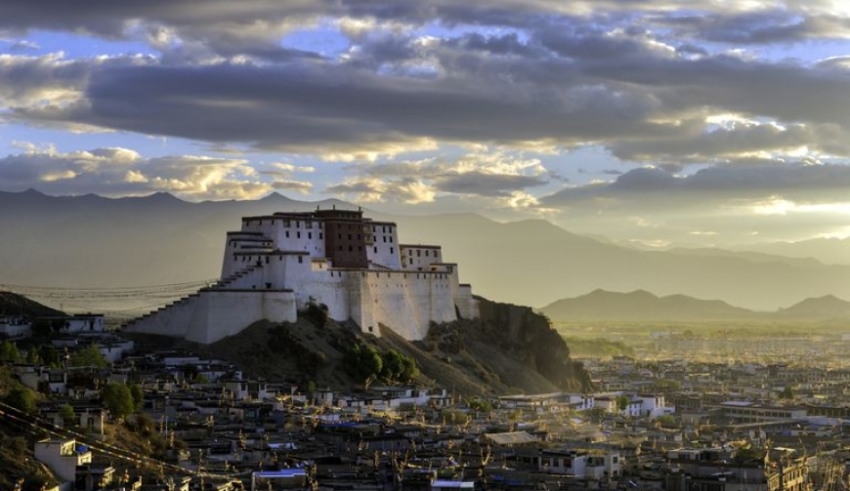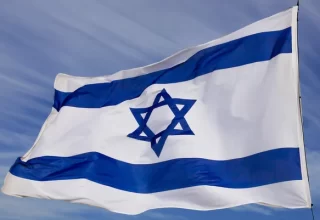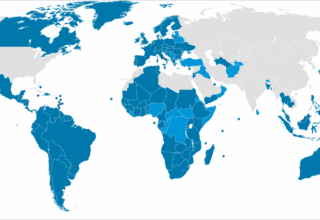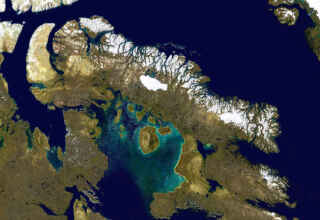
The peace process in Tibet ceased to be an internal affair of China from the moment when the Dalai Lama, the highest Tibetan authority, had to go into exile in 1959. Since 1959, China and Tibet have competed internationally to legitimize their own interpretation of history. The Chinese Government argues that Tibet lived under the extreme abuse of a feudal and serfdom system, and that they were freed by the People’s Republic of China (PRC), and hence, China claims the full sovereignty over the Tibet as being an internal affair. China’s main interest in the Tibetan plateau lies in the enormous wealth of its natural resources. In addition to copper, iron, zinc and other mineral deposits, the Tibet Plateau is the third largest freshwater reservoir in the world, surpassed only by the two poles (Schneider and Pope, 2008). For its part, the Tibetan government in exile argues that Tibet was an independent state before the invasion under the PRC forces and that they have suffered and continue to suffer a cultural colonization and human rights violations.
The Sino-Tibetan conflict
The root of the current conflict between China and Tibet lies in the fact that there is no definitive agreement on the political status of this area before its invasion by the Chinese People’s Liberation Army in 1949 (Sperling, 2004). According to the People’s Republic of China, Tibet has been an inalienable part of China since the 13th century, when it was conquered by the Mongol Empire. On the other hand, in 1993, the Tibetan government in exile claimed that Tibet was already a state before 1950. According to this viewpoint, the PRC’s presence in the Tibet is illegitimate and illegal because the violent invasion of Tibet in 1950 violated one of international law’s most fundamental principles, namely the prohibition of using force against another state. As a result, the PRC has not gained control over Tibet since its invasion, and it is required by international law to stop its occupation and allow Tibetans to fully exercise their right to self-determination. Considering the annexation of Tibet into the PRC as a forced invasion by the latter would imply that, according to international law, all governments have a responsibility to refuse to acknowledge China’s illegal annexation of Tibet and to refuse to cooperate with or aid Beijing in any way in continuing its illegal authority over Tibet. All states should likewise avoid assisting or abetting the use of Tibet’s natural resources without the Tibetan people’s authorization. Additionally, they have a positive responsibility to assist in ending Tibet’s occupation and allowing and respecting the Tibetan people’s right to self-determination (Michael van Walt van Praag and Miek Boltjes).
The Tibet conflict, as a nationalist dispute, confronts the Tibetans’s right to self-determination and independence against a multiethnic state’s right to maintain what it perceives as its historical territorial integrity, the People’s Republic of China. The United Nations has a role to ensure cordial relations among nations based on respect for the principle of equal rights and self-determination, according to the UN Charter. However, it also adds that nothing in the Charter authorizes the UN to act in situations that are essentially within any state’s internal jurisdiction, which is the position hold by the PRC towards the Tibet issue. Because of the ambiguity surrounding whether entities have the right to pursue self-determination, worldwide opinion has become a significant component of such conflicts, and the effort to control historical and current event portrayals is often as strong as the struggle to control territory.
The United Nations formally recognized the right to self-determination of Tibet through General Assembly resolution 1723 (XVI) of 1961, in which it also denounced the violation of fundamental rights and freedoms in that territory by China.
Concerning the current situation in the Tibet, the 2020 County Reports on Human Rights Practices, released March 30, 2021, document a decline in human rights, which includes politically motivated arrests, torture, racial discrimination, forced relocations and attempts to force Tibetans to assimilate by extinguishing their unique culture, language and religion. In Tibet, the PRC has banned monasteries from teaching the Tibetan language, prevented and punished veneration of the Dalai Lama, forced children to leave their homes to attend government-run boarding schools, and issued official interpretations of Tibetan Buddhism that conform with CCP ideology, essentially removing Tibetan identity from the religion. According to the Human Rights Watch repport, Tibetan authorities continue to impose severe restrictions on religious freedom, speech, movement, and assembly, as well as failing to address public concerns about local officials’ mining and land grabs, which frequently involve intimidation and the use of unlawful force by security forces. Additionally, authorities in Tibetan areas have also increased their use of a statewide anti-crime campaign to encourage citizens to report members of their communities if they are suspected of sympathizing with the exiled Dalai Lama or of opposing the government.
Suggestions for the international community
So far, the international community has failed to constrain China’s actions in Tibet and no government in the world has recognized Tibet as an independent State. The international community’s indifference threatens regional peace and security (Michael van Walt van Praag and Miek Boltjes). Given China’s status as an economic powerhouse, only a few countries have proven willing to risk Chinese wrath by condemning Chinese human rights abuses. China’s aggressive behavior toward India and Bhutan, its expansionism in the South China Sea, and its bullying and interference in Nepal, Mongolia, and Southeast Asia, all accompanied by a sense of entitlement, are all linked to how the international community responded to China’s invasion and occupation of Tibet, and how the international community continues to respond. In order to address the current political situation in the Tibet and to end the repressive policy towards its population, the international community must get involved and pressure the PRC to reach a peaceful settlment of the Tibet dispute.
First and foremost, the international community’s current appeasement, self-censorship, and silence are damaging to the resolution of the conflict as it removes all incentive for the Chinese leadership to peacefully negotiate with the Tibetans to gain legitimacy for the PRC’s position in Tibet (Michael van Walt van Praag & Miek Boltjes, 2021). The goal is to encourage a dialogue between the PRC and the Tibet government in exile as it is not likely that China will permit any interference from any third country nor international organizations. The role of the international community is to pressure the PRC to stop human rights violations and to enhance a climate for dialogue. To begin with, it is important to remark that we’re dealing with an unresolved international dispute, not a domestic one in China. The international community should also cease using Beijing’s jargon, such as referring to Tibetans as a “minority” rather than a people or a nation as such language strengthens the Chinese narrative while also denying the Tibetan people their legitimate standing and, implicitly, their right to self-determination. Governments and international institutions, such as the United Nations, should continue to denounce human right’s violations and hold meetings to address the Tibetan situation and to strengthen their commitments regarding the conflict. Although a controversial approach, states could also support Tibetan cultural and religious claims by refusing to recognise of the Chinese annexation of Tibet. Finally, in this direction.
Bibliography:
Alberto, C. (June, 2015), “La cuestión del Tibet: un asunto de difícil solución”, Instituto Español de Estudios Estratégicos.
Chornet, R. And Esteve, J.E. (2001), “El status jurídico internacional del Tibet en el 50º aniversario del acuerdo chino-tibetano de 1951”.
Esteve, J.E. (2008), “La disputa fronteriza entre India y China: origen y evolución de la controversia”, Revista Electrónica de Estudios Internacionales.
Hernández, R. (April, 2009), “La contienda por el Tíbet”, Red de Revistas Científicas de América Latina, el Caribe, España y Portugal, México y la Cuenca del Pacífico, vol. 12, núm. 34.
International Campaign for Tibet (April, 2021), “Tibetan rights violations significant, transnational in 2020: State Department”.
Jordan, P. (2021), “Applying International Law Solutions to the Xinjiang Crisis”.
Mallik, P. (October, 2020), “What is Happening in Tibet What is Happening in Tibet”, the Centre for Land Warfare Studies, available at: https://www.researchgate.net/profile/Pk-Mallick-3/publication/344437070_What_is_Happening_in_Tibet_What_is_Happening_in_Tibet/links/5f7550f2458515b7cf5c2400/What-is-Happening-in-Tibet-What-is-Happening-in-Tibet.pdf?origin=publication_detail.
Márquez, P. (June, 2017), “Religión e identidad, aspectos clave en el conflicto del Tíbet”, Instituto Español de Estudios Estratégicos.
Soto, A. (April, 2009), “La cuestión del Tíbet en una nueva encrucijada”, Real Instituto Elcano.
United States Department of State, Office of International Religious Freedom, (2020), China: includes Tibet, Xinjiang, Hong Kong, And Macau.
By Blanca Prat: The European Institute for International Law and International Relations.















